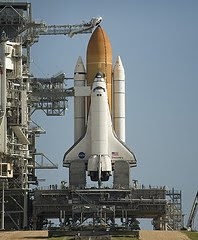 "Plastics" may have been the Baby Boomer watchword, but "synthetic" rules today.
"Plastics" may have been the Baby Boomer watchword, but "synthetic" rules today. That's "synthetic" as in synthetic biology, the hottest biomedical buzzword, promising new drugs, new fuel and someday, new life.
"If we can make life, then we understand it," says molecular biologist Steven Benner of the Foundation for Applied Molecular Evolution in Gainesville, Fla.
Starting with the building blocks of animal and plant cells, synthetic biologists are reengineering living things today and hope to create synthetic life tomorrow. The ultimate goal, Benner says, is "synthesizing life from scratch."
That makes experts, including human genome pioneers Craig Venter of Rockville, Md., and Jay Keasling of the University of California-Berkeley, hopeful and cautious at the same time about the promise and peril of the field.
In July, a team led by Carole Lartigue of the J. Craig Venter Institute in Rockville, Md., reported the field's latest advance in the journal Science: a way to genetically engineer bacteria, previously considered impossible. "Nobody else has done anything remotely like this before," Venter says.
The immediate application is engineering defanged vaccine strains for use against the bacteria family chosen for the study. But a lot of other ideas are cooking, from saving the planet from global warming to figuring out just how life started in the first place.
The promise
In 1974, oncologist Wac{lstrok}aw Szybalski of the University of Wisconsin Medical School in Madison coined the term "synthetic biology" as a way to describe biologists shuffling genes among organisms. The term has taken on multiple meanings since then in science, says David Rejeski of the Synthetic Biology Project at the Woodrow Wilson International Center for Scholars in Washington, D.C. The public largely has no clue, he says: "Nobody really knows what it is."
One popular definition championed by MIT's Drew Endy, who founded the non-profit Biobrick Foundation, is an engineering one, in which the parts of cells act as the screws, bolts, bricks and mortar of future biology. Others, such as Venter and Harvard's George Church, talk of building completely man-made cells, with parts all made from scratch.
Some recent innovations:
• Last year, Keasling's lab unveiled bacteria that make the anti-malaria drug artemisinin by transferring 14 genes into a microbe.
• Benner's lab has created an artificial form of DNA that uses six chemicals for the "bases" of a genetic code, unlike the four found in human DNA.
• In March, Church announced the creation of artificial "ribosomes," cellular factories that take messenger genes and make proteins that keep cells alive.
"Over the next 25 years, synthetic biologically engineered antibiotics could be developed which monitor the adaptation of the bacteria they are designed to kill, and modify their response accordingly," says Richard Kitney of the United Kingdom's Imperial College. "Similarly, synthetically engineered T-cell (immune cell) components could be used to develop a device which is capable of finding and killing cancerous cells."
 Image Credit: NASA/Sandra Joseph and Kevin O'Connell
Image Credit: NASA/Sandra Joseph and Kevin O'Connell






































